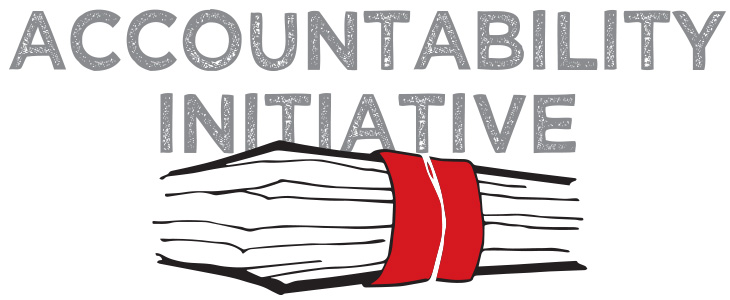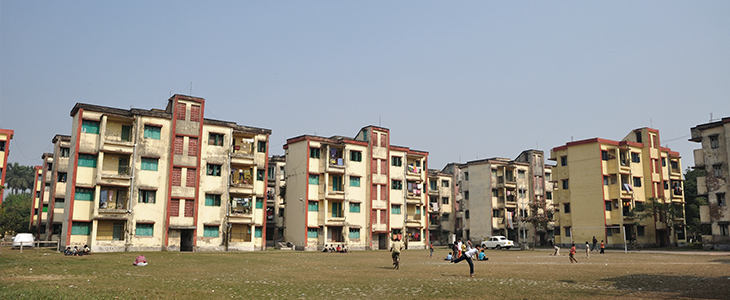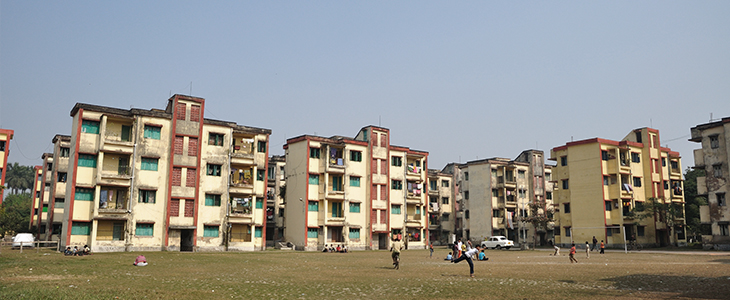This is an article written in the ASER 2016 Report on the Annual Status on Education.
Back in 2012, Accountability Initiative researchers set out to understand the planning and budgeting process for elementary education. The focus of our analysis was the district education administration. Under the Sarva Shiksha Abhiyan (SSA, the Government of India’s flagship program for elementary education) all districts are required to prepare an annual work plan (building on school level plans made by school management committees). These are in turn consolidated into a state plan which is presented to the Ministry of Human Resource Development (MHRD). Several interviews and participant observations later we arrived at the following conclusion: there is no such thing as a district annual work plan! Sure these plans documents exist. But there is no real “planning” involved in preparing these documents. As one candid planner put it: “district work plans are made by photocopying old plans and updating costs. The process is taken so lightly that in one district the planners forgot to update the district names and year on the photocopied plan documents”.
To the casual observer, comments like this are yet another illustration of the apathy and lethargy that India’s administration is infamous for. But our investigations into the planning and budgeting process for SSA and indeed for most other social programs, revealed a more complex story
To begin with, although districts are expected to make annual plans, the plans are made without any relevant financial information. Districts are not given any information on budget estimates, nor do they have the mechanisms to track real-time expenditure. Plans are thus made without any evaluation of spending capacity in the district and are no more than a wish-list. This is one reason why final plan approvals are significantly different to plans submitted. For instance, our analysis of district plans in 2012-13 revealed that a mere 59% of the budget proposed by Nalanda district, Bihar was finally approved. Similarly in 2011-12, only 79% of the budget proposed by Kangra district in Himachal Pradesh was approved.2
These gaps in planning are exacerbated by the centralized structure of the SSA. In this system, state and district governments are expected to align themselves to central government priorities. To illustrate, in one instance a state government needed money to restructure its teacher-training model. To access SSA money, it had to seek GoI approvals through the state SSA authorities. GoI, however, refused to provide money because the restructuring wasn’t aligned with the prescribed framework. Consequently, the final approved state budgets are often very different to what states ask for. In some years the gap between proposed and approved state budgets is as much as 50%. Moreover, state and therefore district priorities are often ignored in favor of pursuing norms and priorities set by the Government of India.3
Poor financial management makes matters worse. Our studies reveal that none of the districts analysed receive their entire approved budget in a financial year. And of the money that does reach, significant proportions arrive toward the second half of the financial year.
Faced with such constraints even the most well-intentioned district administrator will find it difficult to make a plan. And in such circumstances inaction and lack of planning may well be the rational thing to do. After all, why make a plan if you cannot finance it and why set goals and targets when you will be expected to respond to priorities set elsewhere!
In the words of one administrator: “Work plans function on the side. After that we receive orders which are very different from the plans noted in the AWP&B. Then we start fulfilling those.”
But perhaps the biggest gap in the planning and budgeting system, to the extent that plans are made at all, is that it is based entirely on inputs. Goals and targets are linked to data collected through DISE (District School Information System for Education) which does not have a single indicator on learning. Thus learning goals are never specified and as a result budgets for specific initiatives aimed at improving learning quality (budgeted under the line-items for innovation and learning enhancement programs) account for less than1% of the SSA budget. It is instructive that the government discussions around annual budgets, recorded in the PAB minutes, reflect no discussion on learning goals and state specific proposals on how to achieve these goals.
All this was set to change in 2015. The acceptance of the 14th Finance Commission report, the creation (and subsequent endorsement) of a sub-committee to review centrally sponsored schemes under the NITI Aayog, and the rhetoric of co-operative federalism adopted by the government together held the promise of a more flexible, outcome oriented financing system for the social sector. But for the moment this promise remains unfulfilled.
Rather than initiate a substantive debate on a new financial architecture, the emphasis has been limited to introducing a few minor tweaks. For instance, all central schemes, including SSA, are expected to free up 25% of their budgets for a “flexible” pool for states to spend in accordance with their needs (although our informal conversations with education administrators indicate than even this isn’t being implemented). At the same time, the promise of change brought with it much confusion on the ground and a significant slowdown in the movement of money. Accountability Initiative’s analysis of the 2015-16 SSA budget suggested that a mere 57% of funds had been released to states in September 2015. Expenditure was even slower. Just 23% of the approved plan had been spent by September.4
These delays had a direct impact on fund flows to schools. The 3 school grants tracked by the PAISA questions in the ASER survey reveal that the number of schools that reported receiving the school development grant dropped from 76.76% in 2010-11 to 67.92% in 2015-16. The timings of grant receipt has also been affected. The number of schools receiving the school grant by October-November at the time of the ASER survey (half way through the school year) has dropped from 50.86% in 2011 to 45.17% in 2016. Importantly, money available for specific initiatives under the innovation and learning enhancement programs budget line item took a hit. In 2015-16, a mere 25% of state proposals for quality related activities were approved by MHRD.5
Interestingly, while ground level activity may have slowed down due to gaps in financing, the policy space has busied itself with expanding the range of tools available to measure learning in schools. These include the ongoing state level learning assessments, a census assessment being planned by the MHRD, and the NITI Aayog’s efforts to rank states. For the moment the objective and audience for these different assessments are unclear. However, if the government chooses to use these assessments imaginatively, there is room to significantly alter the institutional architecture for elementary education. Here is our proposal: replace the SSA financing model with a three-window financing model that incentivizes states to build long-term, learning focused plans on the one hand and rewards performance on the other.6
The first window would be an annual grant for states to meet their basic infrastructure needs. Much of this has been prescribed by the RTE and most states in the country are still struggling to meet these requirements. For the moment, financing for the RTE is based on annual plans made by state line departments and approved by MHRD. Rather than spending energy on the same exercise every year (the entire state education department spends at least 2-3 months a year making, at times photocopying, annual plans and budget estimates) state governments should come up with a three-year budget estimation which can be funded annually by the centre. This will introduce some level of predictability in the current planning system as states will have a ballpark amount of money that they can expect from the centre. Based on Accountability Initiative’s estimations of current expenditure, this window should account for no more than 50% of the current annual SSA budget. This funding window will address commonly expressed concerns of equity in financing among states and ensure that poorer states are compensated.
In keeping with the 14th Finance Commission’s principles of greater state flexibility over planning and budgeting, the second window should be an untied learning grant given to the states for a 3-5 year period, based on a long-term strategy linked to clearly defined learning targets. Since this is an untied grant, the Centre will no longer need to spend time playing headmaster determining line-item wise expenditure for state governments. Rather, it can focus on providing technical support and guidance to states by undertaking assessments and facilitating knowledge sharing across state governments.
Finally, the third window could link the different assessments with state plans and budgets by offering a performance-based financial reward to states against set targets. Not only will this give much needed teeth to the measurement process, it also has the potential of creating competition amongst states, and over time building greater transparency and public debate on learning levels in India’s schools.
Weeks after the launch of the 2016 ASER report the National Democratic Alliance will present its 3rd and penultimate budget to the nation. ASER 2016 is yet another reminder that even as governments change, very little changes for India’s school going children. The 2017-18 budget may be this government’s last chance to give India’s school going students hope for the future. This is the time for radical change.
1. The PAISA studies are a series of expenditure tracking studies undertaken by Accountability Initiative, Centre for Policy Research. One set of PAISA questions are asked during the school visit that is part of the ASER survey. These relate specifically to a set of annual grants that schools are expected to receive. For more details see www.accountabilityindia.in
2. For more details see: Aiyar et al (2015): “Rules Vs Responsiveness: Toward building an outcomes focused approach to governing India’s finances”. http://www.accountabilityindia.in/paisa/study/download/1268
3. ibid
4. For a detailed analysis of the 2015-16 SSA budget see: Kapur, A and Srinivas, V (2016): “Sarva Shiksha Abhiyan” Budget Briefs Volume 8, issue 1. http://www.accountabilityindia.in/budget/briefs/download/1263
5. ibid
6. For details see Aiyar et al (2015) Rules Vs Responsiveness. A version of this proposal on financing structures was published in Ideas for India in November 2015 and Livemint in February 2016










![[Hindi] Why is Accountability so Important in India? Watch this video to learn more.](https://accountabilityindia.in/wp-content/uploads/2018/12/Animation20Hindi_27th20Jan_0.jpg)
